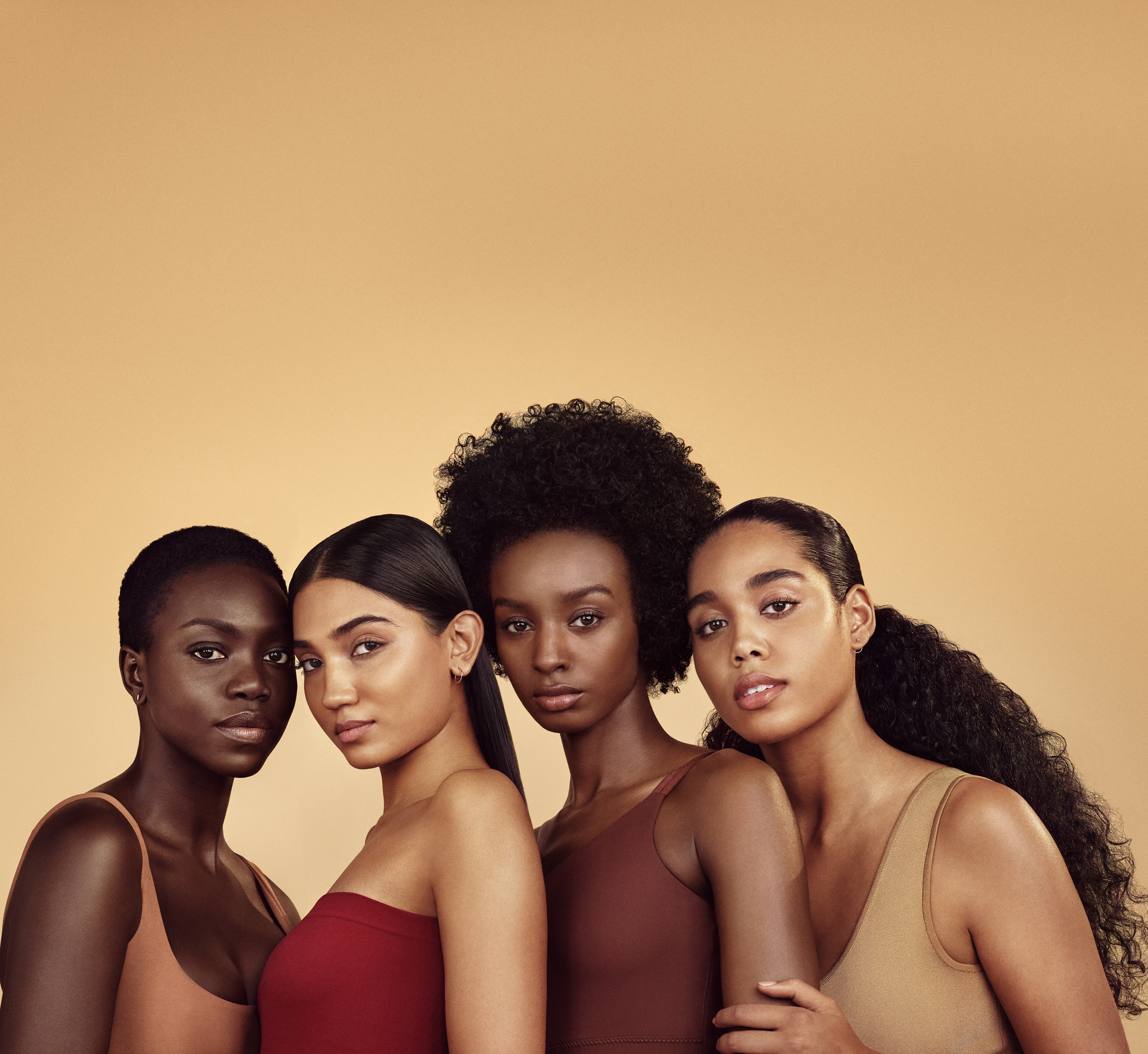
Source: Courtesy of MELÄ’ Skincare / Sarah Irby
Hosted by MELÄ’ Skincare’s co-creator Sarah Irby, Madame Noire got the chance to hear from founders Cashmere Nicole of Beauty Bakerie, Melissa Butler of The Lip Bar, and Regina Merson of Reina Rebelde as they discussed the inequalities in the beauty industry that inspired the creation of their brands, and their thoughts on melanin-rich skin’s place in beauty.
During the conversation, Irby simply defined “the magic of melanin,” as “miraculous.” In addition to highlighting the pigment’s anti-aging and protective benefits, the creator opened up the conversation by explaining that having melanin-rich skin also comes with challenges that haven’t been catered to by the beauty industry for a long time.
“The more melanin you have in your skin,” Irby began, “the more slowly you age, the less you wrinkle — and you also have a built-in SPF 13 coverage. I could go on — but with all that good also comes unique challenges,” she noted. “When melanin rises up to protect the skin it can manifest in hyperpigmentation, dark spots, and uneven skin tone. We also tend to have moisture imbalances because of the way melanin-rich skin is biologically composed… Also undetected sun damage — people think ‘Oh if I have skin of color I don’t need sunscreen,’ but that’s not true.”
“You may be surprised to discover that skincare brands — and even those created for melanin-rich skin,” she continued, “don’t actually go through testing on all skin hues. It’s pretty standard just test on a Fitzpatrick scale of 1 to 6 — 1 being the fairest of skin that tends to always burn and 6 being deeper skin tones that tend to always tan and not burn visibly. Skincare testing tends to happen up in the 2-3 range,” she said of the inequalities of the testing in the suncare industry which inspired MELÄ’’s 30 SFP Sunscreen Oil.
When Butler hoped into the discussion, she noted that the void in the industry for her came through the absences she noticed back in 2010 of clean beauty brands that made their products pigmented enough for darker skin tones and were accessible.
“I love that you just brought up that challenge within the testing because you know when I started the company we were solving the problem of self-expression and inclusion within the beauty industry,” Butler said. “Then also accessibility in terms of price point. Back in 2010 — it’s so funny because we’re a world away now — but when I was thinking about the company we were questioning ingredients. Like if a product said ‘natural’ or ‘vegan’ we automatically assumed that it wouldn’t work.”
“The problem I was solving and the gap that I was trying to fill was largely around education and this idea that ‘You deserve it all,’ she said of how The Lip Bar was manifested. “Consumers don’t have to sacrifice their high-quality cosmetics for pigment or the toxic elements of beauty.”
As a Latina woman, Merson echoed being frustrated with some of the same problems the previous panelists mentioned. For her brand, “The first problem was obviously trying to amplify and celebrate the duality so many women. Not just Latina women — we have women who are Afro-Latina, we’ve got women who are part Mexican and part Asian and part Salvadoran. There’s a lot of the dualities and ways they express themselves so I think that’s why so many Black and Brown women today are making so many strides in our community by either educating themselves or starting businesses.”
“From the formula perspective,” she continued, “We started working on things I didn’t realize were so challenging — like getting translucent talc in eyeshadow versus using traditional white talc — which is why so many eyeshadows on me showed up kind of chalky.” Speaking on how the balance of adding pigments into makeup formulas was a tricky art form, but noting how the absences of shades for women like her inspired the ethos of Reina Rebelde, she continued, “it was a multi-prong problem but it was about addressing a community that’s so diverse and making sure that these different pockets were elevated and a part of the conversation.”
Lastly, Cashmere Nicole discussed the various negative experiences she’d encountered alongside the women in her life — including her grandmother, aunts, and daughter — as they all had issues accessing makeup shades that suited them and brands that prioritized their beauty.
“I would say my earliest experiences with noticing that something was off when it came to shade offerings, accessibility, and the positioning of beauty for dark skin had to be in my teenage years,” she said before adding later, “I also didn’t like the feeling of scrolling down to the bottom of the screen on certain websites when it was time to look for my daughter’s skin tone — she was at the bottom of the screen. When we would go to the store we were bending down at the bottom of the shelf or being told ‘They don’t carry that shade in store.’ This was just three years ago.”
“Some of the gaps in the industry that I noticed came from the offerings not even being there on the shelf, retailers thinking that it was perfectly okay to have dark shades online only, the positioning of the shades, and overall accessibility,” she summarized. In the end and inspiringly, that’s what influenced her brand to become “the first to approach our foundation shades from dark to light,” instead of the other way around.
The fight against inequalities within the beauty industry is still an ongoing battle — but with the influx of brands like the ones mentioned above, it’s clear that the industry is changing for the better one shade at a time.









